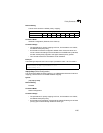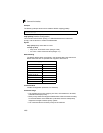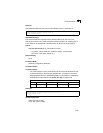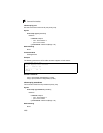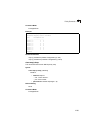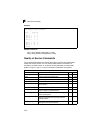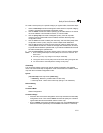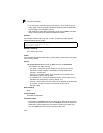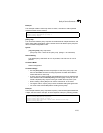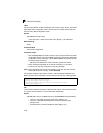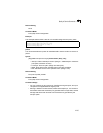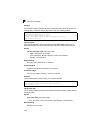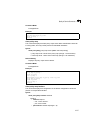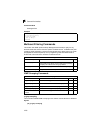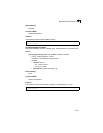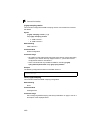
Quality of Service Commands
4-213
4
Example
This example creates a class map called “rd-class,” and sets it to match packets
marked for DSCP service value 3:
policy-map
This command creates a policy map that can be attached to multiple interfaces, and
enters Policy Map configuration mode. Use the no form to delete a policy map and
return to Global configuration mode.
Syntax
[no] policy-map policy-map-name
policy-map-name - Name of the policy map. (Range: 1-32 characters)
Default Setting
The default policy sets DSCP to 0 for IP packets, and CoS to 0 for non-IP
packets.
Command Mode
Global Configuration
Command Usage
•Use the policy-map command to specify the name of the policy map, and
then use the class command to configure policies for traffic that matches
criteria defined in a class map.
• A policy map can contain multiple class statements that can be applied to the
same interface with the service-policy command (page 4-216). Or you can
create a separate policy map for each type of traffic that may enter a port.
• When creating a Policy Map do not use the character ‘&’ in the name.
• The ingress rate for a policy map must be set before setting the egress rate.
• You must create a Class Map before creating a Policy Map.
Example
This example creates a policy map called “rd-policy,” sets the average bandwidth the
1 Mbps, the burst rate to 1522 bps, and the response to drop any violating packets.
Console(config)#class-map rd_class
Console(config-cmap)#match ip dscp 3
Console(config-cmap)#
Console(config)#policy-map rd_policy
Console(config-pmap)#class rd_class
Console(config-pmap-c)#set ip dscp 3
Console(config-pmap-c)#police 100000 1522 exceed-action drop
Console(config-pmap-c)#



